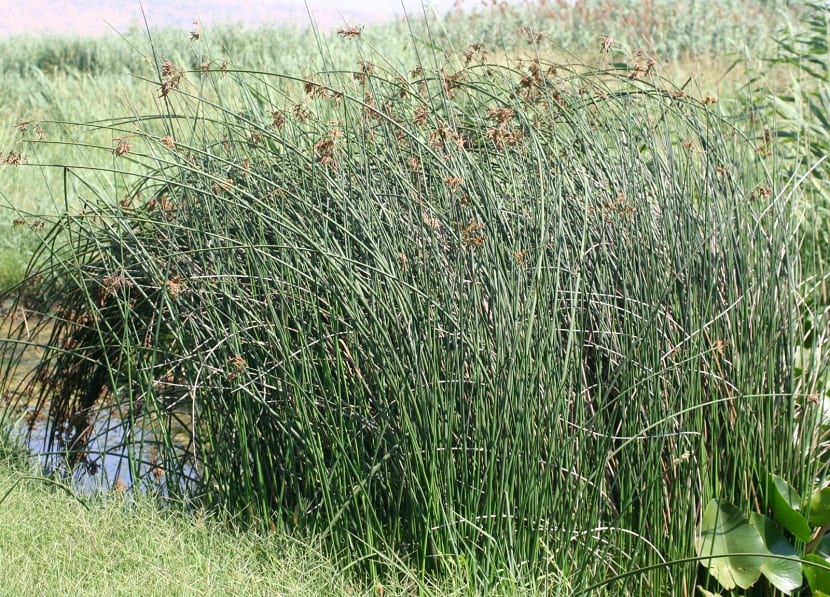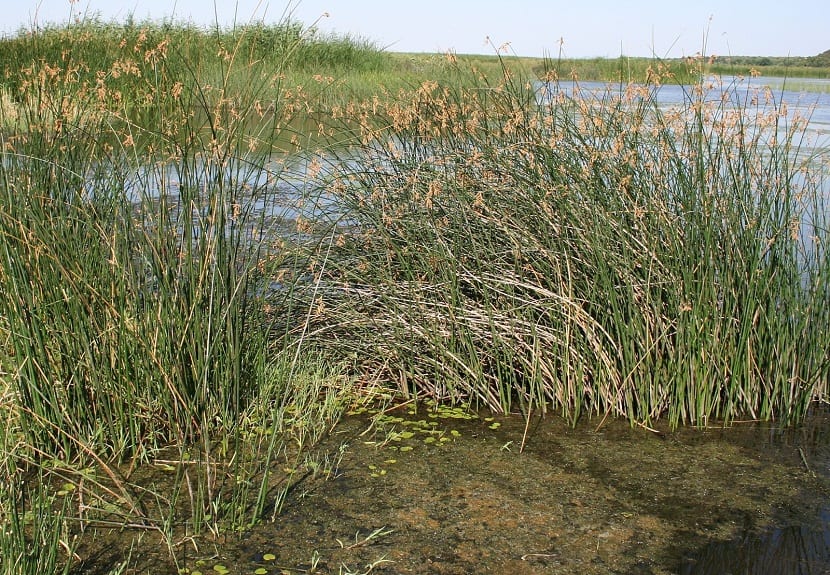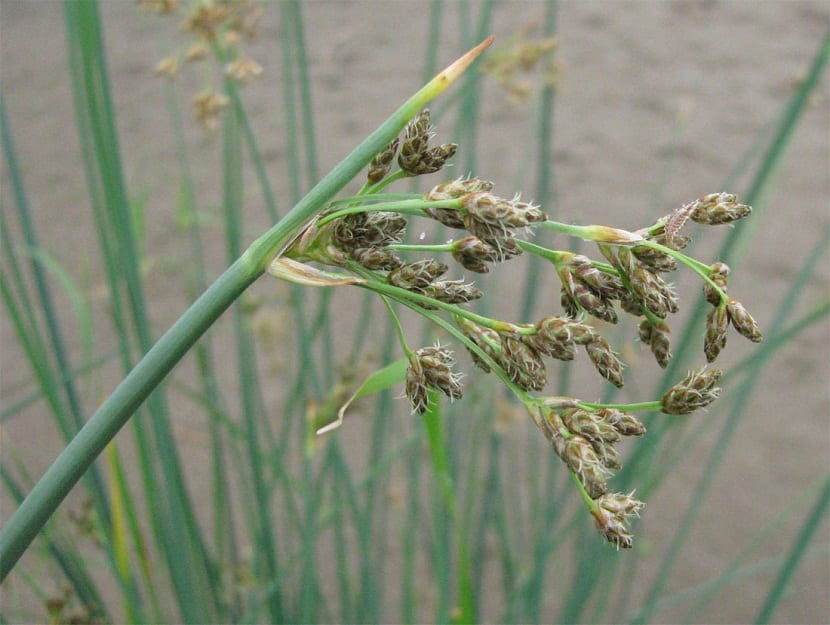
Scirpus lacustris is synonymy (i.e. another scientific name denoting the exact same thing) of Schoenoplectus lacustris. Their common names are multiple and varied, according to the different geographical areas from which the word arises, such as lake junk, bon, reed, lake cirp, sedge, among many, etc. In other words, the scirpus lacustris it's a kind of aquatic plant that grows on the riverbanks and that it is possible to plant in aqueous media, even reaching a depth of 50 cm.
From
Below we will present a quick and effective description of this plant, so that you can recognize it wherever you are and wherever you go. The scirpus lacustris is a perennial type plant It has its roots in the European continent (Lapland), Africa and Asia, Oceania (Polynesia) and both Central and North America. Their habitat, then, is mainly made up of temperate and cold zones.
Characteristics of the Scirpus lacustris
It is a plant of considerable height that can even measure two and a half meters. His method of pollination of flowers (which have hermaphroditic reproduction units) is anemophilia.
Its stem has a rounded shape. The basal leaves are reduced to sheaths. Inflorescences with a large number of spikelets with fascicles are noted. Its fruit is achene-shaped.
What needs does this plant have?
Are you thinking of growing a scirpus lacustris Or are you just curious to find out what their specific ecological needs are? Whatever the reason, here we will explain the importance of ensuring this species a favorable soil quality, temperature and lighting.
It is suitable for the cultivation and development of the species scirpus lacustris, the acidity, alkalinity or neutrality of the soil (given by its pH). Its roots will be favored by a sandy, loamy or high clay type substrate. It is resistant to aqueous, humid or even soaked media.
A piece of advice that emerges as a consequence of the above, is that we must water it in such a way that we can maintain soil moisture, always taking into consideration its texture, as well as other conditions such as sun exposure, ambient humidity and temperature, among others. Its light requirement is not excessively high or low, which is why it gets along well with both semi-shade and direct exposure to the sun's rays and its maximum tolerance to cold is one degree below zero.
Uses of Scirpus lacustris
What can this plant do for humans? Beyond the fact that every living being has importance in itself, It is interesting to ask ourselves about the direct benefitss (indirect there are many) that this species presents to our society, so let's see some of them.

The use of this species occurs fundamentally, in two possible levels, the industrial and the food. In the first of them their stems are grown for their ability to be used as textile fibers. In turn, their rhizomes, like their shoots, are marketed as vegetables suitable for human consumption, while their value as forage and to fix land is also recovered. On the other hand, the young stalks are good for making paper pulp.
In the second we can consider the use of its young stems as food. Likewise, the raw rhizomes served as food for some North American indigenous peoples, who consumed them dried and ground into a flour (ideal especially in periods of scarcity).
In the preceding paragraphs we have navigated in the depths of the life of this plant, from its general characteristics to its ecological needs to know it in its entirety. We have also recognized that its importance for man is not negligible.
Will you take care of it then if you cultivate it or do you meet it on your way? Will you be an ecologist when you plant it? scirpus lacustris concerned? Nature needs more people to care for all species, so defend it.
